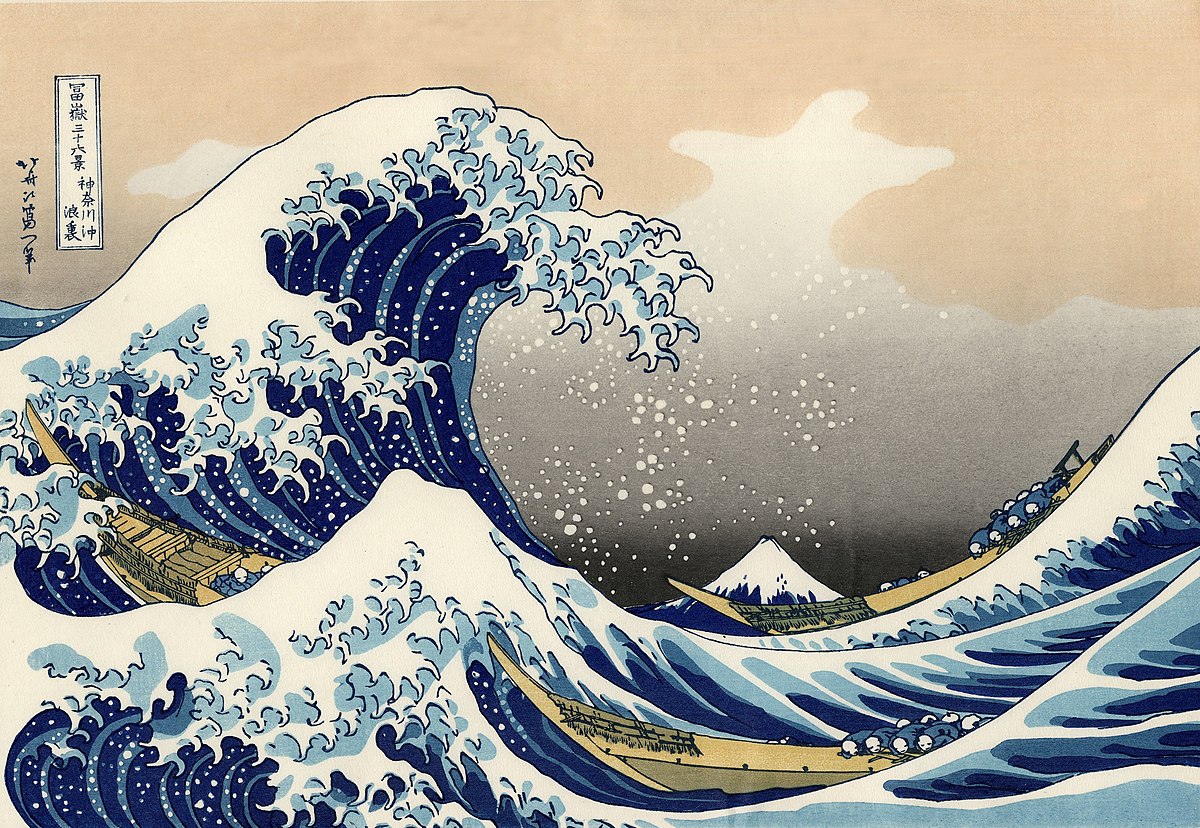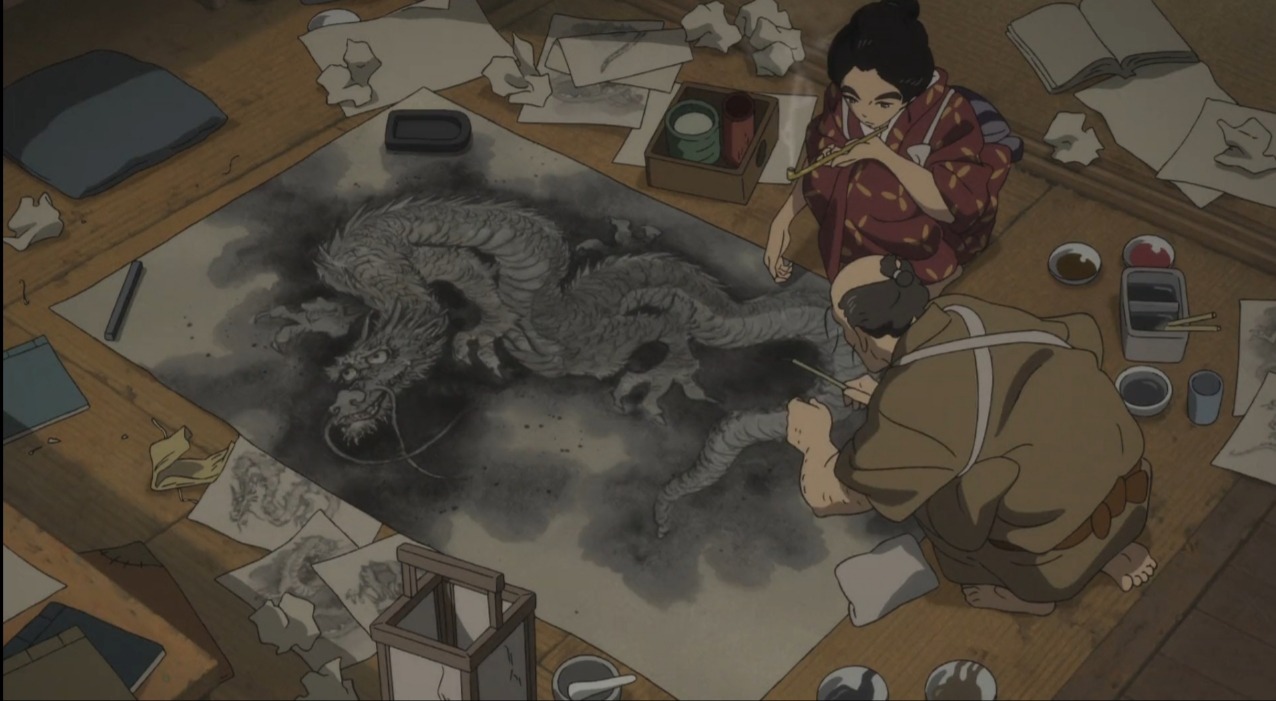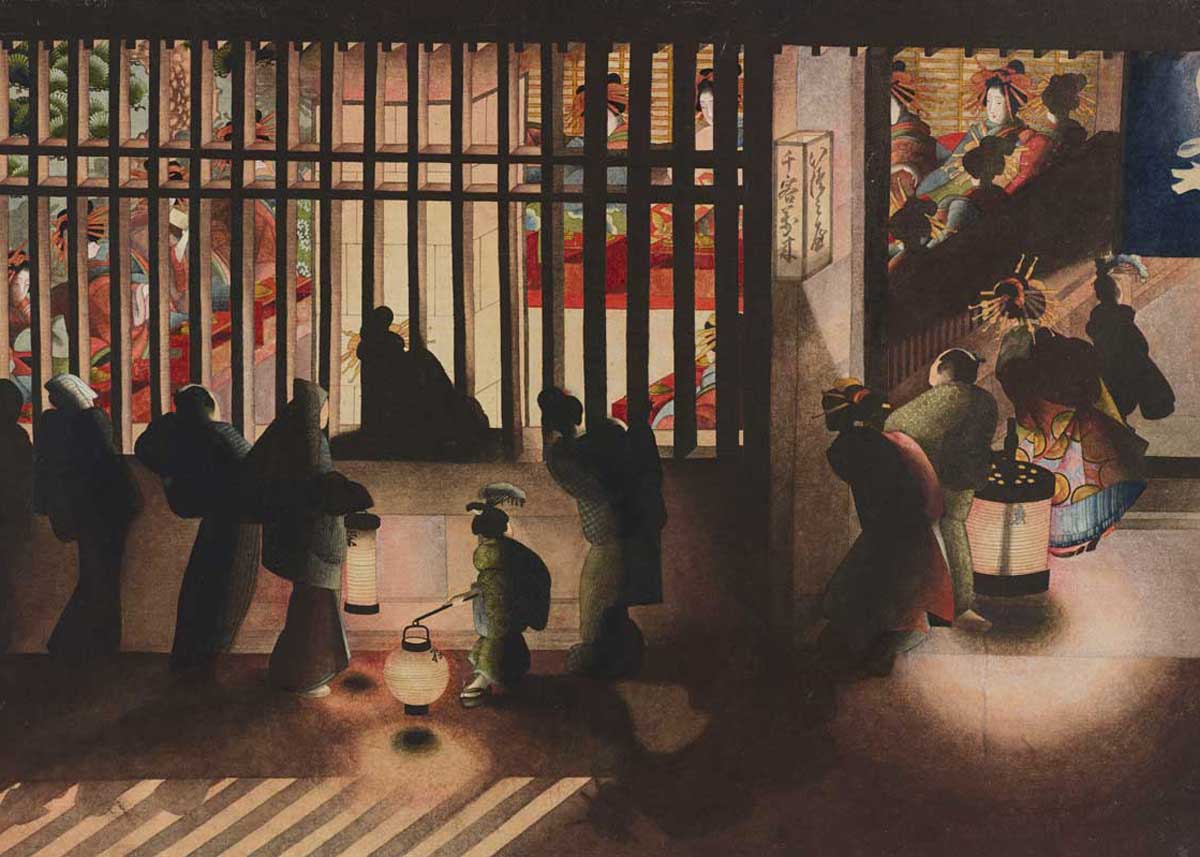Nightscene in the Yoshiwara by Katsushika Oe
Many of you may be familiar with this absurdly famous print by Katsushika Hokusai, arguably the most famous artist of the Edo period (1603-1867):

However, something that I learned in a recent Japanese art history class is that he had a daughter named Oe. His daughter was incredibly skilled as an artist and printmaker (as seen by the print at the top of the page), however, it is a gift that we still have a number of her works in existence today. In the Edo period admirable qualities in a woman were still very much shaped by Neo-Confucian understandings of domesticity, serving one's husband or men of the family, and creation of anything other than women's disciplines was frowned upon. Fortunately for Oe, her father was a reknowned printer in his time and she would have assuredly been around her father's printing workshop her entire life, assisting in the gathering of materials, hosting guests, and even probably drafting sketches for her father's many commisions.

Due to print workshops functioning in this way: where numerous artists assisted a master in creating print series, as well as primary source evidence of Oe assisting her father until his death at 88, it is safe to assume that Oe helped create her father's iconic works like the Great Wave above.

Outside of her almost assured contributions to her father's body of work, Oe's artistic skill and creations stand on there own in their beauty and skill. The piece depicted above shows a scene from the Yoshiwara district: a district of businesses meant to serve the burgeoning merchant class in the Edo Period which was known predominantly for the numerous brothels and beautiful courtesans within them.

Depicted in this print above, these courtesans were famous throughout the city and even other areas through the rise of print distribution. Ukiyo-e (or translated as Pictures of the Floating World) is the genre of prints which depicted these gorgeous courtesans as well as nature scenes, tourist attractions, famous actors, and popular sumo wrestlers. Oe's work at the top of the page fits into this genre of art in its depiction of the pleasure quarters in Tokyo called the Yoshiwara.

Link to a high resolution image of Oe's work. Oe's work is expertly rendered with a wonderful contrast between the bright colors of the interior and the night viewers on the exterior. In Japanese art history this print stands out for its choice to render a night scene with such intense use of blacks to create an interplay of light and shadow as using intense darks in painting and printmaking did not become popular till decades after Oe. Splendidly, Oe's use of dark pigment in the exterior illustration only draws our eyes to the brilliant world of color and beauty the courtesans on the interior present. In many ways this print accurately depicts and reflects Japanese society at the time: these beautiful courtesans were the peak desire of the male-gaze and even beauty standards at the time. Many thousands of people were desirous to view these women and look in on their lives in order to enter this floating world for even a brief moment. It is an absolute wonder of a piece that really delights my eyes with the amazing color and composition. It is also a gift that we have an investigation of the Yoshiwara (a place designed to attract male buyers through the commodification of women's bodies) from the perspective of a master woman artist.
P. S. There is a wonderful animated movie depicting Oe's life that I really enjoyed linked here. Thanks for reading and as always reach out if you'd like to discuss ;)